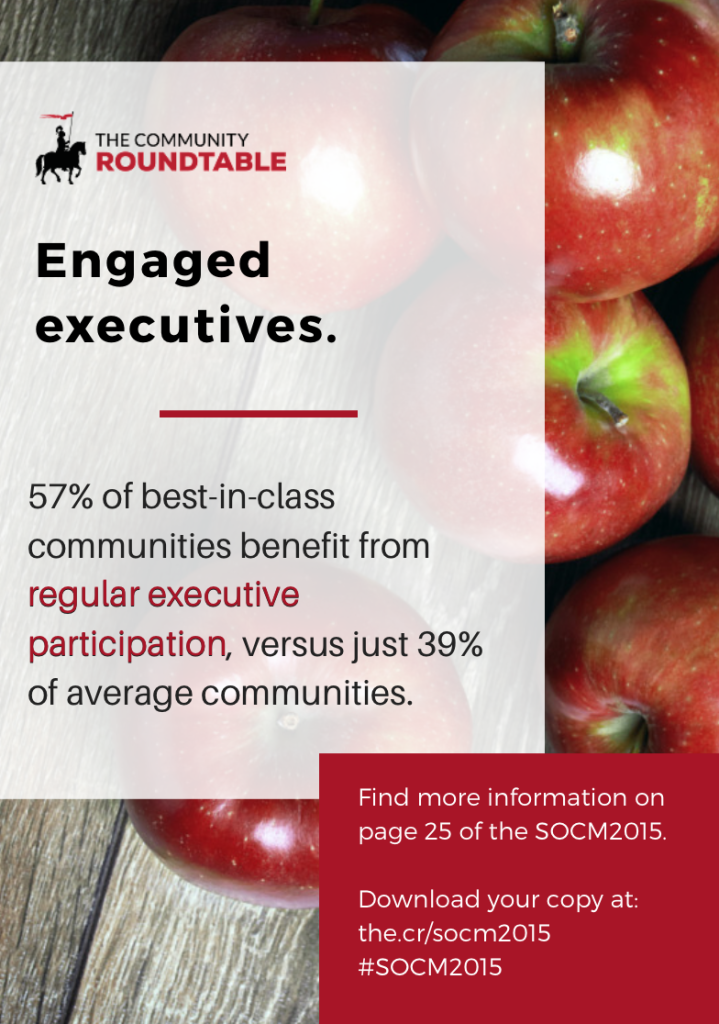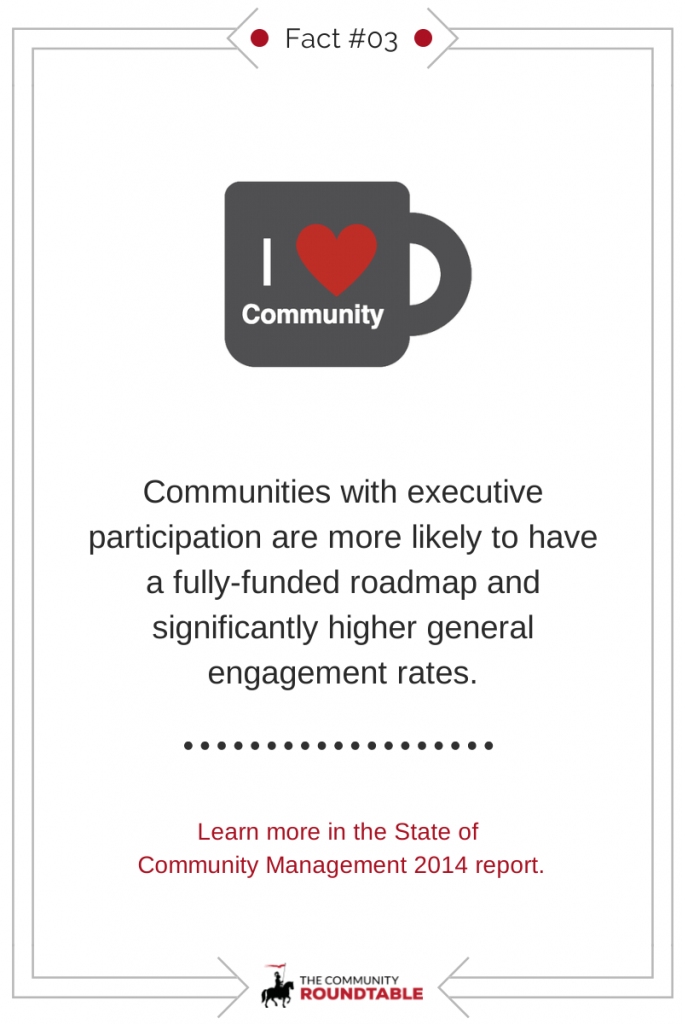By Ted McEnroe, The Community Roundtable
Getting executives engaged in community has been a challenge for community managers since the beginning of community management. For every social CEO out there, there are dozens of C-suite members who “don’t have time,” “don’t feel the need” or “don’t see the point.”
The point is pretty simple – the conversation is happening. Among your customers. In your organization. And it’s happening with or without you. If you don’t know about it – and don’t use the opportunity to connect with stakeholders – then someone else will. And if, as an organizational leader you want your investment in communities to pay dividends, one of the best ways to strengthen your community as an executive is by taking part in it.
That’s lesson #4 in our State of Community Management Monday Facts series. Our best-in-class communities were substantially more likely to have engaged executives than the average in our 2015 survey.

Executive engagement doesn’t just add another voice to the stream. It sets a tone. It says to an organization that community is something that matters to the overall strategy and operations of the organization. And it’s not just something for the CEO to consider. In fact, the data show that while just 1-in-3 CEOs take part in their organization’s communities, that the highest percentage of any C-suite executive. CFOs, COOs, even CMOs take part at a lower rate.
But there are signs of opportunity. More and more training is being created to help executives understand the role that they can play in community, and the personal and organizational benefits that accrue from it. Our The Social Executive framework is now being supplemented by a series of Social Executive Shorts that will soon be available. (Stay tuned!)
Also, the percentage of community budget being approved at the C-level or VP level is growing. Nearly 70% of communities with separate budgets have them approved at the VP level or higher, and that rises to over 80% of best-in-class communities. If an executive has to sign off on your budget, there’s a good bet you can get them paying greater attention to your community, creating another entry point for you to talk with them about the benefits of the community approach.
Want to tap into more great ideas for connecting your executives with community? Join TheCR Network!
Other posts in the #SOCM2015 Monday Facts Series:
#1: Community Teams Build Success
#2: Empowering Your Members
#3: Strategic Investment

